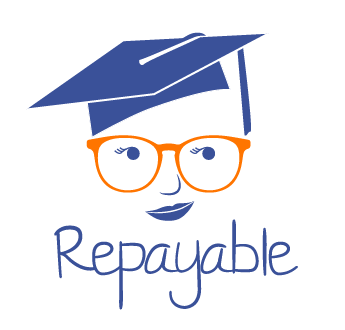
How to Handle Student Loans After Graduation
Congratulations!!! You’ve taken your last exam, written your last essay, and taken out your last student loan. Now that you’ve graduated, the logistical questions of paying back those student loans are starting to come up. No worries! In today’s post you’ll learn how to handle your student loans now that you’re finished with college.
Estimated read time ~8 min. Estimated watch time at 1.5x ~6 min.
What to expect right after graduation.
Federal loans and private loans might be treated differently. Federal student loans have a six month “grace period”. During this period you don’t have to make payments on your student loans. If you haven’t found work yet, this period is designed for you. If you’re already working, you may want to start making payments; if you’re planning to work toward loan forgiveness, you may want to apply for a Direct Consolidation Loan to remove your loans from the grace period so your early payments count toward the number needed for forgiveness.
Different lenders handle private student loans differently. Yours may offer a grace period or they may start collecting payments soon after graduation. Be sure to contact your lender to find out which it is so you don’t miss any payments.
Take an honest look at your debt and know your loans.
Student loans invoke fear of the unknown like nothing else. I mean, we all know that 70% of today’s graduates have debt, but how many of your friends have you actually discussed real numbers and real repayment strategies with? I bet it’s almost zero. There’s a real sense of shame that accompanies student loan debt, which contributes to fear and leads to avoidance.
Don’t follow that path. Look your loans right in the eye, know exactly how much you owe and who your servicers are. Learn which types of loans you have, federal or private and differentiate among federal loan types (Pell, FFEL, Direct, Grad PLUS) then proceed to the next section. Repayable’s Roadmap to Understanding Your Student Loans has everything you need.
Choose your repayment plan.
Exit counseling for student loans is…. lacking in depth at best. That means you may leave college with no real understand of your options and the advantages or disadvantages of each plan. I recommend checking out this post Picking the Right Repayment Plan for an in-depth review of your options.
In general, income-driven plans are best for anyone seeking Public Service Loan Forgiveness (PSLF), Income-Driven Loan Forgiveness (IDLF), or who can’t afford a higher monthly payment. The biggest downside to these repayment plans is that lower payments lead to longer repayment terms which means you’ll pay significantly more interest.
If your goal is to repay your debt quickly, the 10 year standard plan is a solid option. This plan will help you pay off your loans quickly and with the least amount of interest. The biggest drawback to this plan is that the monthly payment can be incredibly high, to the point of being unaffordable for some borrowers.
When it comes to the Graduated Repayment plan or Extended Repayment plan, I tend not to recommend either of these options. Under both plans you will pay more interest than another plan. The graduated repayment plan has payment increases every two years which often become unaffordable for borrowers. And because payments start low under this plan, sometimes the payments only cover the interest on the loan and don’t actually reduce the balance until the payment increases. One of the four income-driven plans is likely a better fit for a borrower struggling to afford monthly payments.
Consider your loan forgiveness options.
Some borrowers are interested in pursuing loan forgiveness after graduation, but for others the path to loan forgiveness is too far away. I suggest starting your exploration by reading Three Major Types of Loan Forgiveness.
Here’s a quick overview of the three largest federal student loan forgiveness programs.
- Public Service Loan Forgiveness (PSLF). Forgives the entire remaining balance of student loan debt tax free after 120 months of eligible payments while working full-time for an eligible employer.
- Teacher Loan Forgiveness (TLF). Forgives either $5,000 or $17,500 of undergraduate student loan debt tax free after five consecutive years of serving as a high quality teacher in a qualifying low-income school district.
- Income-Driven Loan Forgiveness (IDLF). Forgives the remaining balance of student loan debt after 20-25 years of income-driven repayment. The forgiven amount is taxable.
What about refinancing?
With all the podcast ads you’ve probably listened to the siren song of refinancing companies promising to save you thousands of dollars. Refinancing can be a good option for some borrowers and detrimental to others. If you’re considering refinancing I recommend starting with the Refinancing Strategy Guide.
A couple of quick points about refinancing.
- It’s the only way to lower your interest rate.
- Best suited to borrowers with good to excellent credit (which you may not have yet had a chance to build).
- Best for borrowers with high income relative to debt.
- Best for borrowers with predictable income.
- Privatizes federal student loans so not for borrowers pursuing one of the three federal loan forgiveness programs.
- Can be particularly advantageous for lowering the interest rate on private student loans.
Take a moment to congratulate yourself.
You’ve done something awesome and finished your college education. You’ve mastered exam taking and you’re going to master student loan repayment too. Repayable is all about empowerment with clear actionable information you can use.
Now that you’ve made it through the starter guide to approaching your student loan repayment after graduation you’re set to take charge of your debt. If you have any questions, don’t hesitate to reach out. Join the community on Instagram, YouTube, and the Repayable Facebook Page.

Recent Comments